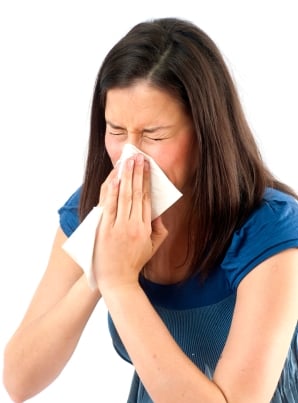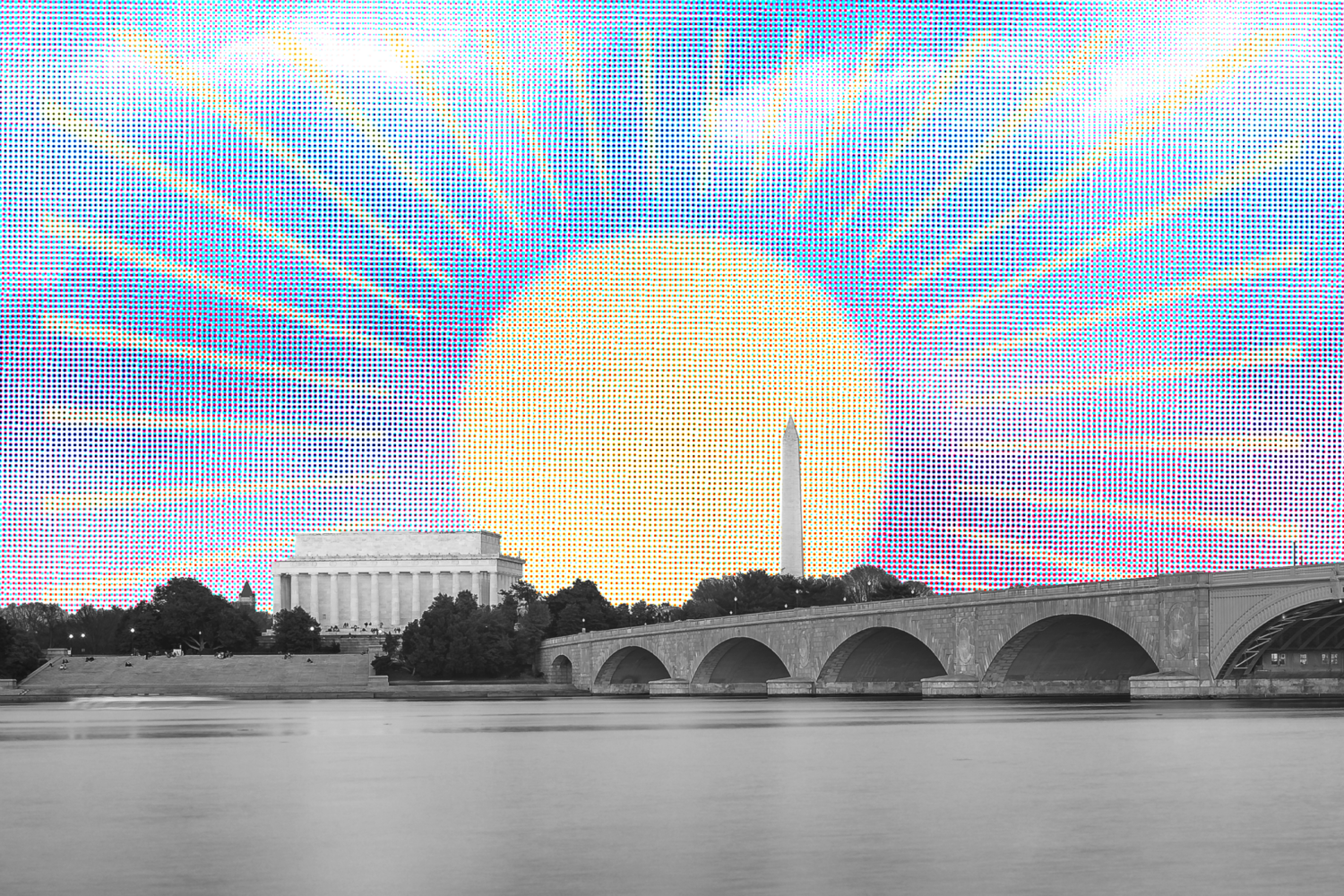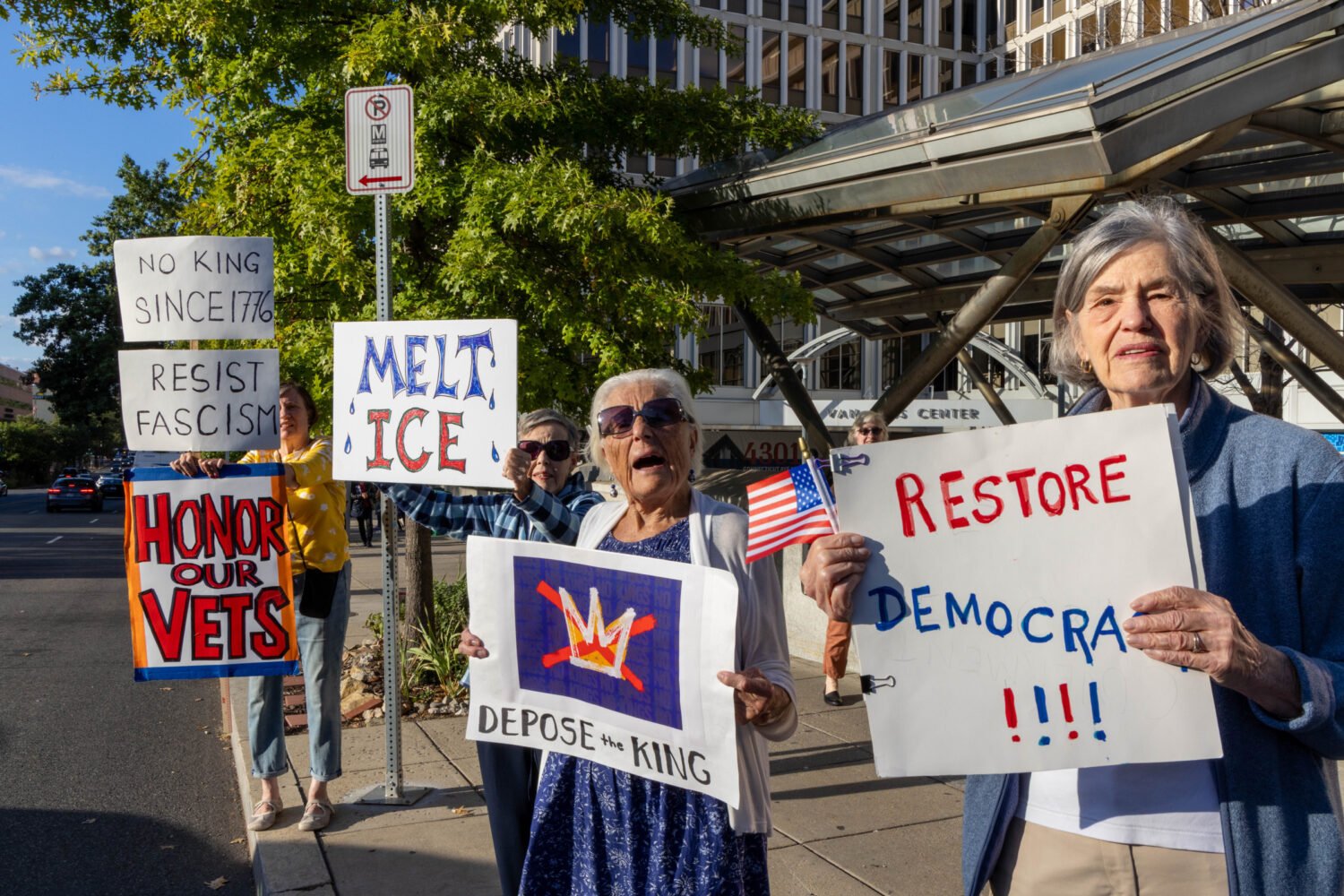
It starts in the spring. The warm weather sets off a dust storm of tree pollen. Cars and sidewalks are carpeted in fine yellow powder. Grass pollen takes over in the late spring. The heat turns smog into ozone. Days get assigned colors—code orange, code red. Fall brings ragweed. Eyes water. Noses run. Asthma, coughing, and earaches ensue until the weather turns cold.
Washington can be a tough place to breathe.
“It’s a common refrain among the people I see in my practice,” says Dr. Daniel Ein, director of the Division of Allergy and clinical professor at George Washington University Hospital. “And that would be true for every allergist in town.”
Scientists predict it will only get worse.
How Bad Do We Have It?
Before you pack your bags, consider that Washingtonians don’t suffer more than people in many other cities. Last year, the DC-based Asthma and Allergy Foundation of America ranked Washington 56th on its list of the 100 most challenging places to live with fall allergies. The foundation also publishes a list of bad places for spring allergies; worse than average pollen counts this spring caused Washington to jump from 43rd to 25th. Even then, two dozen other cities rated more poorly.
“I’m not sure it’s worse in Washington than it is in other places,” Ein says. “There’s a kind of pride of possession, a pride of place. People in Washington think they’ve got it worse than the people in Atlanta, but the people in Atlanta think it’s far worse for them.”
Two Factors
Most of what hampers our breathing falls into one of two categories: allergens and irritants.
Both attack our eyes, ears, and nasal passages and inflame our lungs. Allergens are things such as pollen, mold spores, and animal dander. Irritants include gases and microscopic particles from tailpipes and smokestacks.
High above the earth’s surface, ozone shields us from the sun’s ultraviolet radiation. It’s dangerous at lower altitudes where humans can breathe it. Ozone can cause chest pains, wheezing, coughing, or asthma.
Tracking Pollution
To help keep track of ozone and other pollution, the Environmental Protection Agency calculates what’s called the Air Quality Index using data from monitoring stations across the United States. The AQI is a score between 0 and 500. The higher the number, the heavier the air pollution and the worse the health risk.
To simplify things, scores get assigned one of six colors: green, yellow, orange, red, purple, or maroon. A “code green” day corresponds to an AQI of 0 to 50 and is a day when the air poses little or no risk—imagine a crisp, clear summer day high in the mountains. On the opposite end of the spectrum, days when the AQI falls between 301 and 500 are considered code maroon, or hazardous to human health. Code-maroon conditions typically occur in areas immediately downwind of wildfires.
Washington’s worst days come during summer and typically rate either code orange (for an AQI of 101 to 150, considered unhealthy for sensitive groups such as children, the elderly, or those with heart or lung disease) or code red (for an AQI of 151 to 200, when the air can affect healthy people who exert themselves outdoors and can cause sensitive types to suffer breathing difficulties or asthma attacks).
In 2010, Washington saw three code-red days and 31 code-orange days.
Bad Grades in Air Quality
In its 2011 State of the Air report, based on data from 2007 to 2009, the American Lung Association gave Washington an F for ozone and a D for particle pollution in a 24-hour period. Among 277 metropolitan areas in the country, our region ranked 14th for high-ozone days and 33rd for 24-hour particle-pollution levels.
Along with those tough grades is some good news: Washington’s ozone levels have decreased by more than 75 percent since the late 1990s. Similarly, 24-hour particle-pollution levels have plunged by more than 80 percent since 2000. That corresponds to a similar improvement in air quality across the country.
“Generally speaking, air pollution is getting better nationwide,” says Mike Tringale of the Asthma and Allergy Foundation of America.
Good News, Bad News
Experts cite several reasons for the air-quality improvement.
On one hand, America has become more environmentally conscious. Congress passed the Clean Air Act, and it’s working. Cars now carry fuel-economy standards and catalytic converters. Power plants have taken steps to clean up emissions.
On the other hand, much manufacturing has moved overseas to places like China, whose air pollution is worse by several orders of magnitude. Dr. Ein spent time teaching in Beijing four years ago. The visibility was so poor, he says, that “you couldn’t see across the street.”
The EPA has moved to tighten federal regulations further on soot, smog, and ozone, proposing rules the agency says will save tens of thousands of lives. But the proposals have fueled a battle on Capitol Hill, with Republicans arguing that the benefits in air quality aren’t worth the cost to businesses.
The Pollen Problem
In Washington, allergens deserve more of the blame for our breathing maladies than pollution does, says Suzette Mikula, an associate professor in the Department of Otolaryngology—ear-nose-and-throat medicine—at Georgetown University Hospital.
For many people, especially those who move here from other parts of the country, Washington’s pollen can trigger latent allergies or asthma, even among those who never suffered from either before.
“It’s a very green city,” Ein says. “We have trees dumping tons and tons of pollen on the city each day.”
Mikula says the start of the spring allergy season brings a 20-to-30-percent increase in patient traffic: “I see a lot of patients with allergies that get worse when they come here. The pollen counts can get crazy.”
What’s Ahead
Scientists have charted a marked increase in pollen counts in recent decades, thanks to global warming. Excess carbon dioxide not only contributes to rising temperatures but also feeds plant growth. That means longer, heavier pollen seasons.
“If you look at pollen over the last 10 or 20 years, there’s this incredible increase,” Tringale says.
A recent study led by Department of Agriculture plant physiologist Lewis Ziska found that longer pollen seasons had led to a “clear increase” in ragweed pollen levels from 1995 to 2009 in ten cities between Texas and Canada.
The increases were more pronounced in the northern areas. Three of the southernmost cities—in Arkansas, Oklahoma, and Texas—saw virtually no change in the length of their pollen seasons over the 15-year study period.
By comparison, cities in Nebraska, Wisconsin, and Minnesota saw their pollen seasons grow by 11, 12, and 16 days. (Washington, DC, wasn’t included in the study; the city in Nebraska was the closest in latitude to our region.) The northernmost city studied, in Canada, gained 27.
What to Do About It
Short of reversing global temperature change, Mikula offers some preventive measures: Mop up pollen, dust, and mold at home. Keep countertops and carpets clean. Wash bed sheets in hot water. Change household air filters.
If symptoms persist, Ein suggests trying over-the-counter medicines before calling an allergist: “The best thing to do is go to the pharmacy, see what allergy medications there are, and try them. Seventy to 80 percent of people who have problems probably don’t need an
ything more.”
Potent antihistamines once available only by prescription—such as Claritin, Allegra, and Zyrtec—can now be bought over the counter and are usually enough to treat allergies. Relief from congestion can be found in drugs containing pseudoephedrine, sold as Sudafed, Dimetapp, Contac, Allegra-D, Claritin-D, and Zyrtec-D.
If over-the-counter medicines don’t work, Ein says, see an allergist or your primary-care physician, who can prescribe stronger prescription versions of the same drugs or a cortisone nasal spray, such as Flonase or Nasonex, or an anithistamine spray such as Astelin.
As a more aggressive treatment, an allergist can administer a regimen of allergy shots over the course of up to three to five years. Ein says that can eliminate allergies entirely.
Both Ein and Mikula say that if none of those treatments succeed or if symptoms are especially bad—recurring sinus infections or worse—patients should see an ear-nose-and-throat specialist, who can offer advice on surgical options.
For our top allergists, visit our Top Doctors database. You must be a subscriber to access the list. These allergists were selected by their peers as the best in the region in our most recent Top Doctors survey, published in March 2010.
This article appears in the October 2011 issue of The Washingtonian.

















